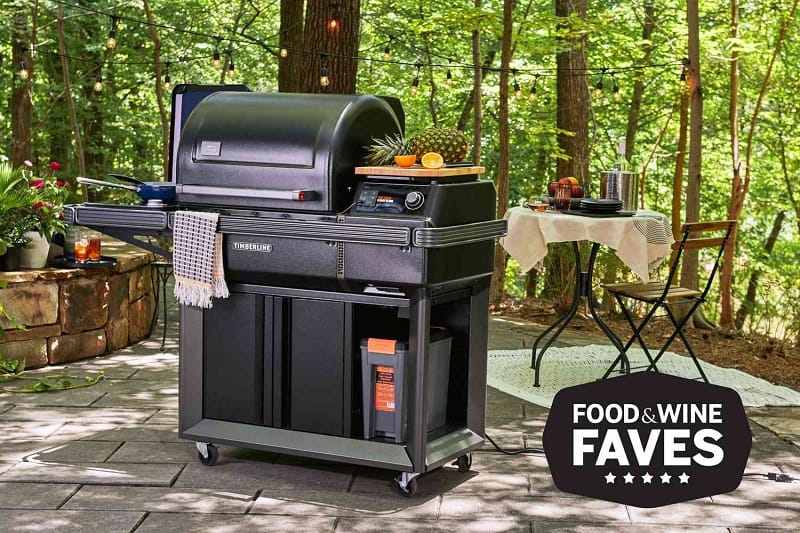In the captivating realm of smoked culinary delights, two distinct smoking apparatuses have emerged as the focal points of many a pitmaster’s affection: the pellet smoker and the wood smoker. As enthusiasts ponder their next smoking adventure, understanding the nuances between these two smoking titans can unlock a world of flavorful possibilities.
Fueling the Fire – Powering Your Smoker
Pellet smokers offer a unique and effortless approach to the smoking process, relying on the convenience of compressed wood pellets as their primary fuel source. These innovative apparatuses are equipped with electric hoppers and digital controls, allowing users to easily maintain precise temperature settings with the simple turn of a dial or the touch of a button.
In contrast, wood smokers embrace a more traditional and hands-on approach to smoking, utilizing a variety of wood types, including chunks, splits, or chips, as their fuel source. This setup requires more active involvement from the pitmaster, as temperature management is achieved through careful tending to the fire and adjusting the smoker’s air vents.
Smoke Stack Showdown – Flavor and Control
The controlled burn of wood pellets in a pellet smoker ensures a consistently delectable smoke flavor, with a steady stream of aromatic vapors permeating the cooking chamber. This predictability and reliability are hallmarks of the pellet smoker experience, allowing users to repeatedly achieve a well-balanced and harmonious smoke profile.
With their manual fuel management, Wood smokers offer a wealth of opportunities for the discerning pitmaster to explore a diverse range of smoke flavors. By carefully selecting and combining different wood types, adjusting the airflow, and meticulously tending to the fire, enthusiasts can coax a symphony of smoky notes, from the sweet and fruity to the bold and savory.
Temperature Control – Keeping it Steady

Maintaining precise and consistent temperatures is a breeze with a pellet smoker, thanks to its advanced digital controls and automated fuel delivery system. The user-friendly interface allows for easy temperature adjustments, with the pellet hopper automatically replenishing the fuel as needed to maintain the desired cooking environment.
Temperature control is a skill honed in wood smokers through practice and patience. Mastering the art of managing airflow and fuel levels to maintain the ideal cooking temperature requires a deeper understanding of the smoker’s mechanics and a keen eye for adjusting the dampers and vents.
Convenience Considerations – Time, Attention, and Cleanup
One of the primary selling points of pellet smokers is their unparalleled convenience. Once the initial setup is complete and the temperature is dialed in, these innovative apparatuses require minimal monitoring, allowing users to set it and forget it. This “hands-off” approach particularly appeals to those with busy lifestyles or those seeking a more effortless smoking experience, as it frees up time and attention for other culinary tasks or social engagements.
In contrast, wood smokers demand a more active involvement from the pitmaster throughout the smoking process. Maintaining the ideal temperature and smoke output requires constant vigilance, with adjustments to the fire and airflow necessary to ensure a consistent and optimal cooking environment. This level of hands-on attention may appeal to those who find the process of smoking to be a meditative and engaged activity. Still, it may deter those seeking a more carefree approach to their culinary adventures.
The ease of cleanup is another factor to consider when choosing between two kinds of smokers. Pellet smokers often feature convenient ash pans and easily accessible grease traps, streamlining the post-cooking cleanup process.
Wood smokers, however, can require more involved cleaning due to the accumulation of ash and potential creosote buildup, depending on the specific. This added step in the cleanup process may be a consideration for some users.
Size and Space Considerations
Pellet smokers come in various sizes, offering options for small patios and larger outdoor living spaces. Some models even feature portability, making them a versatile choice for those who enjoy smoking on the go or at various locations. This diversity in size and design allows enthusiasts to select a unit that seamlessly integrates with their available outdoor environment.
Wood smokers come in a diverse array of sizes and styles, catering to a wide range of smoking needs and preferences. However, the larger footprint, particularly offset models, may require more careful consideration of outdoor space than their pellet-powered counterparts.
Unveiling the Costs
The investment required for a pellet smoker can vary widely, with prices spanning from affordable entry-level models to high-end, feature-rich units. In addition to the initial purchase price, its owners must factor in the ongoing cost of acquiring the wood pellets to fuel their smoking adventures. While the convenience of pellet smoking may come with a higher upfront cost, the ease of use and minimal maintenance can make it a worthwhile investment for some.
The cost of wood smokers can also span a wide spectrum, depending on the type, size, and brand. Offset smokers, for instance, tend to be more expensive due to their larger size and more complex design. However, more compact vertical smokers can offer a more budget-friendly option. Regardless of the specific model, enthusiasts must also account for the ongoing expenses of charcoal, wood chunks, and splits needed to maintain their smoking sessions.

Hey there, barbecue lovers! I’m Mike Jones, the proud owner of Austin’s Live Fire Barbecue, where we specialize in serving up mouthwatering Central Texas-style barbecue. At our restaurant, we’re all about slow-cooking our meats over open flames, infusing them with that signature smoky flavor that you can’t resist.
When you visit us, you can expect to feast on tender brisket, juicy ribs, and flavorful sausages, all cooked to perfection using traditional methods passed down through generations. We take pride in sourcing the finest cuts of meat and using our secret blend of spices to create a truly unforgettable dining experience.
